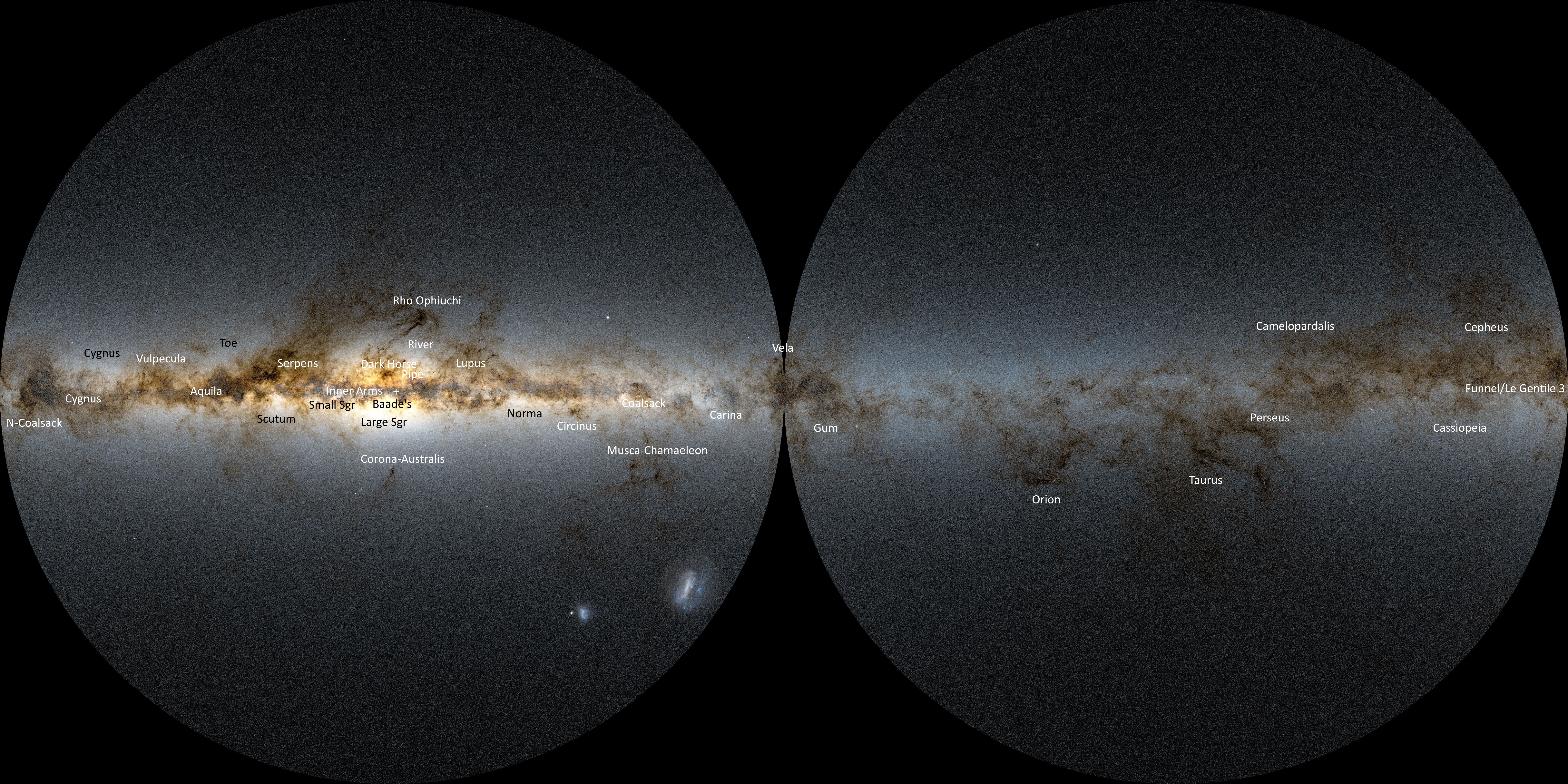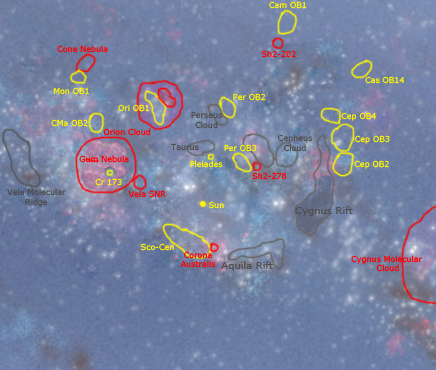|
Barnard's Catalog
{{astronomical-catalogue-stub ...
The astronomer Edward Emerson Barnard compiled a list of dark nebulae known as the ''Barnard Catalogue of Dark Markings in the Sky'', or the ''Barnard Catalogue'' for short. The nebulae listed by Barnard have become known as Barnard objects. A 1919 version of the catalogue listed 182 nebulae; by the time of the posthumously published 1927 version, it listed 369. See also * List of dark nebulae References barnard Astronomical catalogues of nebulae External links Barnard's Catalogue of 349 Dark Objects in the Sky VizieR listing at CDS The compact disc (CD) is a digital optical disc data storage format that was co-developed by Philips and Sony to store and play digital audio recordings. In August 1982, the first compact disc was manufactured. It was then released in Octo ... [...More Info...] [...Related Items...] OR: [Wikipedia] [Google] [Baidu] |
Barnard 68
Barnard 68 is a molecular cloud, dark absorption nebula or Bok globule, towards the southern constellation Ophiuchus and well within the Milky Way galaxy at a distance of about 500 light-years, so close that not a single star can be seen between it and the Sun. American astronomer Edward Emerson Barnard added this nebula to his catalog of dark nebulae in 1919. His catalog was published in 1927, at which stage it included some 350 objects. Because of its opacity, its interior is extremely cold, its temperature being about 16 K (−257 °C/-431 °F). Its mass is about twice that of the Sun and it measures about half a light-year across. Characteristics Despite being opaque at visible-light wavelengths, use of the Very Large Telescope at Cerro Paranal has revealed the presence of about 3,700 blocked background Milky Way stars, some 1,000 of which are visible at infrared wavelengths. Careful measurements of the degree of obscuration resulted in a finely sampled and acc ... [...More Info...] [...Related Items...] OR: [Wikipedia] [Google] [Baidu] |
Edward Emerson Barnard
Edward Emerson Barnard (December 16, 1857 – February 6, 1923) was an American astronomer. He was commonly known as E. E. Barnard, and was recognized as a gifted observational astronomer. He is best known for his discovery of the high proper motion of Barnard's Star in 1916, which is named in his honor. Early life Barnard was born in Nashville, Tennessee, to Reuben Barnard and Elizabeth Jane Barnard (''née'' Haywood), and had one brother. His father died three months before his birth, so he grew up in an impoverished family and did not receive much in the way of formal education. His first interest was in the field of photography, and he became a photographer's assistant at the age of nine. He later developed an interest in astronomy. In 1876 he purchased a refractor telescope, and in 1881 he discovered his first comet, but failed to announce his discovery. He found his second comet later the same year and a third in 1882. While he was still working at a photography studio ... [...More Info...] [...Related Items...] OR: [Wikipedia] [Google] [Baidu] |
Dark Nebulae
A dark nebula or absorption nebula is a type of interstellar cloud, particularly molecular clouds, that is so dense that it obscures the visible wavelengths of light from objects behind it, such as background stars and emission or reflection nebulae. The extinction of the light is caused by interstellar dust grains located in the coldest, densest parts of molecular clouds. Clusters and large complexes of dark nebulae are associated with Giant Molecular Clouds. Isolated small dark nebulae are called Bok globules. Like other interstellar dust or material, things it obscures are only visible using radio waves in radio astronomy or infrared in infrared astronomy. Dark clouds appear so because of sub-micrometre-sized dust particles, coated with frozen carbon monoxide and nitrogen, which effectively block the passage of light at visible wavelengths. Also present are molecular hydrogen, atomic helium, C18O (CO with oxygen as the 18O isotope), CS, NH3 (ammonia), H2CO (formaldehyde), c-C3 ... [...More Info...] [...Related Items...] OR: [Wikipedia] [Google] [Baidu] |
List Of Dark Nebulae
This is a list of dark nebulae (absorption nebulae), also called "dark clouds". List *E Nebula ( Barnard 142 and 143) *Barnard 68, possibly the closest to Earth at about 400 light-years. *Bernes 157 (Sandqvist and Lindroos, SL 39-41), another close dark nebula of the Corona Australis Molecular Cloud, which includes NGC 6729 Named absorption nebulae See also the references to names from other cultures at dark cloud constellations: *Coalsack Nebula *Cone Nebula *Dark Doodad Nebula * Dark Horse Nebula *Horsehead Nebula ( Barnard 33) *Pipe Nebula (also see Dark Horse Nebula; includes Barnard 59, 77 and 78) * Snake Nebula (also see Dark Horse Nebula) * Keyhole Nebula Barnard objects See also *Lists of astronomical objects *Nebula *Dark nebulae * Bok globules External linksEast Valley Astronomical Society Barnard Dark Nebulae Observing Program [...More Info...] [...Related Items...] OR: [Wikipedia] [Google] [Baidu] |
Dark Nebulae
A dark nebula or absorption nebula is a type of interstellar cloud, particularly molecular clouds, that is so dense that it obscures the visible wavelengths of light from objects behind it, such as background stars and emission or reflection nebulae. The extinction of the light is caused by interstellar dust grains located in the coldest, densest parts of molecular clouds. Clusters and large complexes of dark nebulae are associated with Giant Molecular Clouds. Isolated small dark nebulae are called Bok globules. Like other interstellar dust or material, things it obscures are only visible using radio waves in radio astronomy or infrared in infrared astronomy. Dark clouds appear so because of sub-micrometre-sized dust particles, coated with frozen carbon monoxide and nitrogen, which effectively block the passage of light at visible wavelengths. Also present are molecular hydrogen, atomic helium, C18O (CO with oxygen as the 18O isotope), CS, NH3 (ammonia), H2CO (formaldehyde), c-C3 ... [...More Info...] [...Related Items...] OR: [Wikipedia] [Google] [Baidu] |
Astronomical Catalogues Of Nebulae
Astronomy () is a natural science that studies celestial objects and phenomena. It uses mathematics, physics, and chemistry in order to explain their origin and evolution. Objects of interest include planets, moons, stars, nebulae, galaxies, and comets. Relevant phenomena include supernova explosions, gamma ray bursts, quasars, blazars, pulsars, and cosmic microwave background radiation. More generally, astronomy studies everything that originates beyond Earth's atmosphere. Cosmology is a branch of astronomy that studies the universe as a whole. Astronomy is one of the oldest natural sciences. The early civilizations in recorded history made methodical observations of the night sky. These include the Babylonians, Greeks, Indians, Egyptians, Chinese, Maya, and many ancient indigenous peoples of the Americas. In the past, astronomy included disciplines as diverse as astrometry, celestial navigation, observational astronomy, and the making of calendars. Nowadays, professional a ... [...More Info...] [...Related Items...] OR: [Wikipedia] [Google] [Baidu] |
Barnard Objects
Barnard is a version of the surname Bernard, which is a French and West Germanic masculine given name and surname. The surname means as tough as a bear, Bar(Bear)+nard/hard(hardy/tough) __NOTOC__ People Some of the people bearing the surname Barnard in England are thought to have arrived after the time of the Norman Conquest (1066), Changing their surnames from Bernard to Barnard. Some of whom, it has been suggested, can be traced back to Hugo Bernard. Some of the Barnard family in England may have been Huguenots who fled from the Atlantic coast region of France ''circa'' 1685 (the time of the revocation of the edict of Nantes) or earlier than that date. By contrast, the Barnard family in Holland (the western provinces of the Netherlands) can be definitively traced back to ''circa'' 1751 (Izaak Barnard) of Scheveningen.The surname Barnard is also found in South Africa among the Afrikaner community. An example of this is Christiaan Barnard, A South African Cardiac Surgeon who pe ... [...More Info...] [...Related Items...] OR: [Wikipedia] [Google] [Baidu] |
VizieR
A vizier (; ar, وزير, wazīr; fa, وزیر, vazīr), or wazir, is a high-ranking political advisor or minister in the near east. The Abbasid caliphs gave the title ''wazir'' to a minister formerly called ''katib'' (secretary), who was at first merely a helper but afterwards became the representative and successor of the ''dapir'' (official scribe or secretary) of the Sassanian kings. In modern usage, the term has been used for government ministers in much of the Middle East and beyond. Several alternative spellings are used in English, such as ''vizir'', ''wazir'', and ''vezir''. Etymology Vizier is suggested to be an Iranian word, from the Pahlavi root of ''vičir'', which originally had the meaning of a ''decree'', ''mandate'', and ''command'', but later as its use in Dinkard also suggests, came to mean ''judge'' or ''magistrate''. Arthur Jeffery considers the word to be a "good Iranian" word, as has a well-established root in Avestan language. The Pahlavi ''viči ... [...More Info...] [...Related Items...] OR: [Wikipedia] [Google] [Baidu] |




